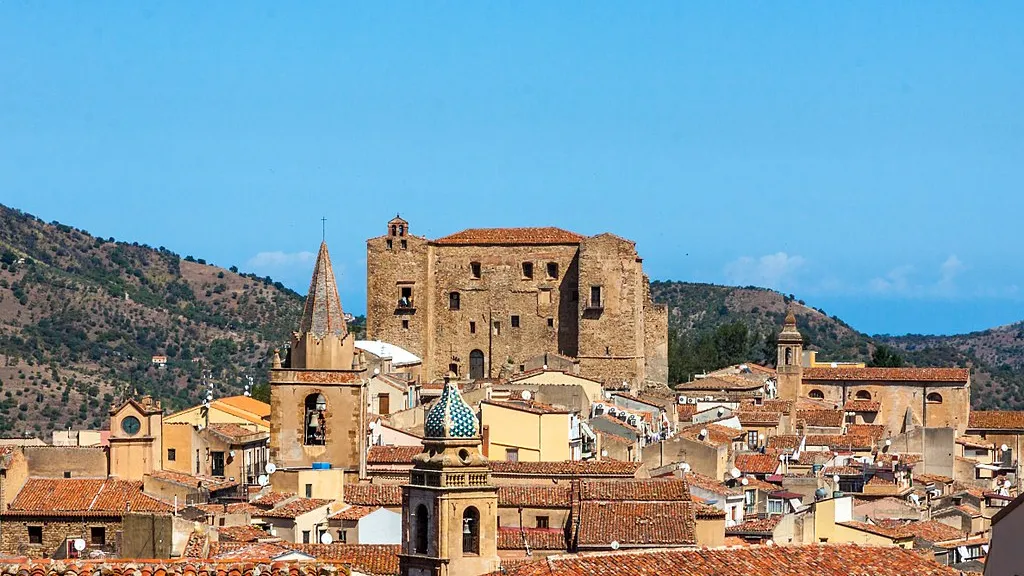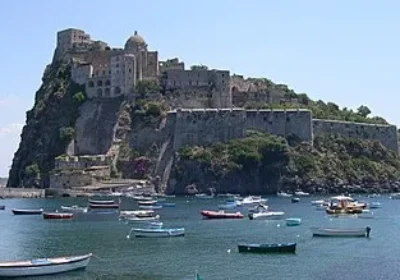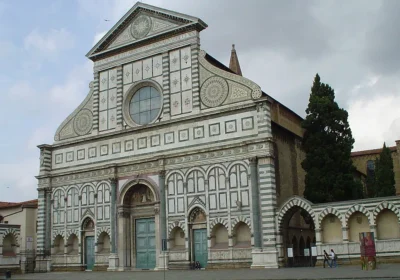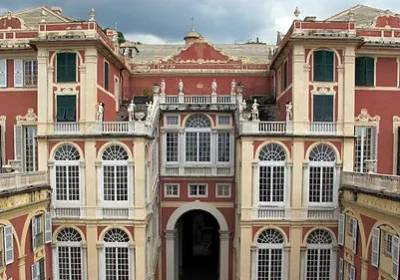Tour of Cefalù and Costelbuono.
Castelbuono is a small medieval village set in the Madogna Park, in a forest landscape of oaks, chestnuts, ashes and cherry trees. Wandering around the town centre means breathing the air of the ancient past, best represented by the Ventimiglia Castle, commissioned by the aristocratic Ventimiglia family in the 14th century, located in the closed Byzantine village of Ypsigro. Walking through its narrow streets is like entering another dimension.
You will begin your journey with the beautiful Matriz Vecchia church. Built in the 14th century on the ruins of a pagan temple, the church has a Renaissance portico, a magnificent Baroque portal and an octagonal spire covered with majolica tiles. The interior of the church was enlarged at the end of the 15th century and contains some interesting works, notably the polyptych above the high altar depicting the Coronation of the Virgin Mary, in which the saint is shown wearing spectacles – some beautiful statues, frescoes and painted columns. The Church of Matris Nuova, more precisely the Church of della Nativita di Maria, was built between the sixteenth and seventeenth centuries. Inside it is a Latin cross with twelve stucco-covered stone columns, four of which, located on the two altars of the transept, can be attributed to Serpotta (a famous Italian sculptor).
A minor wonder is the church of San Francisco, dating from the fourth century, with the Ventimillas Mausoleum, a late medieval octagonal building that can be accessed from the church through a lauranseco marble portal with the tombs of the Ventimillas, rulers of Castelbuono. Along the nave of the church towards the exit, in the choir you can admire one of the three oldest pipe organs in Italy, dating from 1547, which still retains all its original mechanical components: hearing its sound is like taking a leap into the past.
There are many other churches of artistic value in Castelbuono.
The symbol of the village is the Ventimiglia Castle, built in the 17th century to accommodate when several Ventimiglia families moved here from Palermo. The construction represents Arab-Norman and Swabian features: the cube shape is reminiscent of Arab architecture; the square towers, although built into the façade, reflect the Norman architectural style as well as the walls; and the round towers recall aspects of Swabian architecture. Today the castle is the seat of the Museo Civico di Castelbuono with its several sections: Archaeology, Urbanism, Sacred and Modern Art.
The main street is the Fontana della Venus Ciprea (restored in 1614) with Andromeda above, Venus and Cupid in the central niche and four bas-reliefs with mythological scenes related to the theme of love.
Castelbuono is also famous for its manna, a whitish stalactite composed of a vaguely sweet liquid that emerges from the ashes of the castle and nearby Pollina and coagulates under the heat of the sun: the sap of these trees emerges from incisions in the stems and branches and, after drying in the warm summer sun, is collected and used even as a sweetener, medicinal and laxative.

















